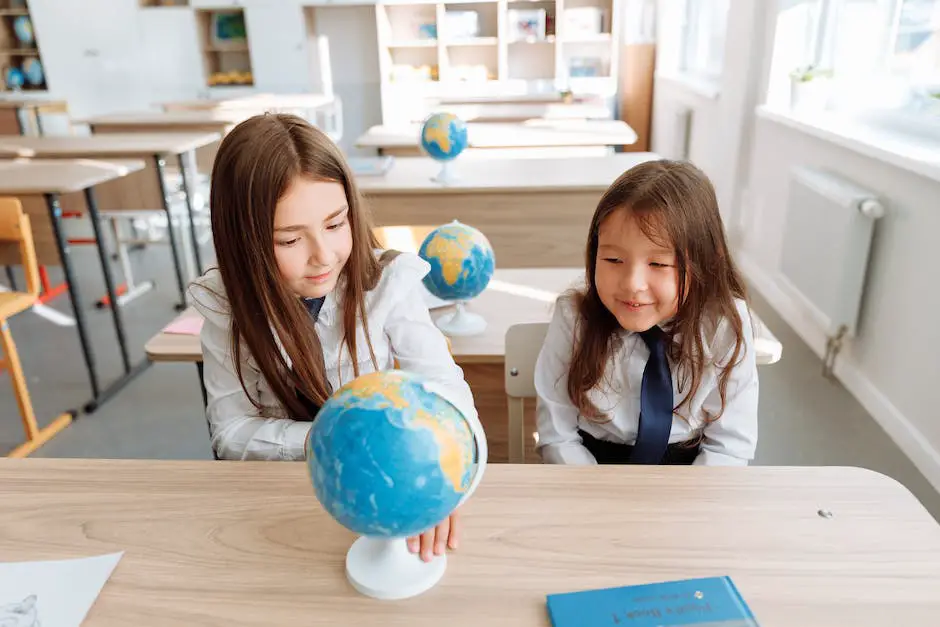Understanding the Historical Significance of School Holidays
Ever wondered why we have school holidays and how they evolved over time to become what they are today? Or how differences in the observance of school holidays impact educational and societal practices across the world? This exploration dives deep into the origins and historical significance of school holidays, examining both their impact on education and wider societal frameworks, as well as how they differ across cultures and countries. We’ll also delve into current debates and discussions surrounding the length, timing, and effects of school holidays, shedding light on proposals for change and potential ramifications.
Origins of School Holidays
The Evolution of School Holidays: An Inextricable Part of Educational Systems
The tradition of school holidays is deeply embedded in the fabric of educational systems worldwide, with origins that can be traced back several centuries. The crudeness and biologically driven cycle of agricultural life commenced this tradition – children originally got time off from school to help their families with the harvest. This historical relevance of school holidays amplifies our understanding of how societal norms and the environment played a critical role in shaping what we now know as the academic calendar.
Origins of Summer Holidays: The Agricultural Lens
The concept of the summer break, which is now loved by children and often a challenging time for working parents, primarily originated from the needs of an agrarian society. In the United States particularly, the long summer holidays were not put in place for the benefits of children’s leisure, as most may assume. Instead, the major reason was an environmental factor. During the 19th and early 20th centuries, when the U.S. was largely an agrarian society, children were necessary labor sources during planting in the spring and harvesting seasons in early fall. Hence, the school year was structured around this, giving children time off during these periods.
The Emergence of Other School Holidays: The Institutional Factors
The Christmas and Easter holidays, around which shorter school holidays are scheduled, have different origins. These breaks are largely established based on religious observances. As Christian holidays, they have been institutionalized and mainstreamed into the majority of the world’s educational calendars, despite the diversity of religious beliefs among students.
In contrast, Thanksgiving is a uniquely American holiday that has become a staple of the academic calendar. Teachers utilize the Thanksgiving break not only for rest but also for teaching students about the early history of the nation. The holiday’s historical significance stems from the early pilgrims’ feast to celebrate their first successful harvest in the New World.
Cultural Factors: A Fusion of Tradition and Education
Just as with institutional patterns, cultural factors play a significant role in the facet of school holidays. This is particularly true in the case of cultural or national celebrations. For example, Martin Luther King Jr. Day, a federal holiday falling on the third Monday of January, is observed by schools across the United States. This holiday is an opportunity for lessons on civil rights and the fight against racial discrimination, elucidating students about integral chapters of history.
Evolution Over Time: The Intersection of Schools and Society
Societies evolve with time, and with them, associated practices and norms transform as well. A prime example of this phenomenon is the tradition of the summer break in schools, a concept that caters to an agricultural society. Although most Western countries have since transitioned away from agrarian systems, this break remains in practice. Despite the concerns about a potential academic slide due to this extended break, many families cherish this summertime tradition, thus underscoring the historical significance of school holidays.
The progression of school holidays mirrors the ever-changing landscape of cultural, environmental, and institutional factors. These periods of recess aim not just to provide rest for students, but also create opportunities for commemoration, learning, and understanding of historical events and figures, thereby bridging modern education systems with their historical roots.

Impact on Education and Society
How History Has Shaped Academic Calendars
Historical events, socio-cultural norms, and shifts in agricultural practices have greatly influenced the formation and significance of school holidays within the United States. The traditional academic calendar in the country has ties to its agrarian roots, with the long summer break originally designed for children to aid their families during the bustling farming season. Winter breaks often occurred during extreme weather periods, making travelling difficult. Furthermore, designated holidays were typically arranged around significant religious and national celebrations.
Impact on Curriculum Planning:
The scheduling of significant school holidays influences curriculum planning, where educators design lessons around the school year’s ebbs and flows. School holidays, such as Winter break or Spring break, create gaps in instruction and thus affect the sequence and pacing of teaching. To adjust, provided material often becomes denser or shortened to align with this punctuated learning timeline.
Opportunity for Respite and Rejuvenation:
School holidays offer essential periods of rest for both students and educators. These breaks provide a necessary respite from the rigors of academic life, allowing students time to rejuvenate and prepare for the demanding study periods that follow. Teachers, too, utilize these breaks to recharge, plan, and undertake professional development activities.
Facilitating Family Vacations:
School holidays, particularly the extended summer break, have become synonymous with family vacations. These vacation periods symbolize a time for families to travel together, create new experiences, and strengthen their relationships. This societal norm has deep roots tied to the initial conceptualization of the school calendar that emphasized shared family time.
Economic Impact and Teen Job Opportunities:
From an economic perspective, school holidays significantly stimulate the tourism sector, with families often choosing to holiday during these periods. Furthermore, these holidays, especially the long summer break, provide teenagers the opportunity to take on seasonal jobs. This not only nourishes their work ethic but also contributes to the overall economy as working students infuse their wages back into the marketplace.
Addressing Achievement Gaps:
Moreover, school holiday periods can either contribute to or mitigate achievement gaps, depending on the student’s socio-economic context. For example, for lower-income students who may not have access to educational resources during these breaks, the prolonged summer holidays could exacerbate learning loss, referred to as “summer slide.” Conversely, students from more affluent backgrounds may benefit from these periods by engaging in enrichment activities or educational travel that enhances their breadth of knowledge.
Understanding Culture and History through School Holidays:
School holidays, such as Martin Luther King Jr. Day or Presidents’ Day, serve as essential opportunities for pedagogical learning about crucial historical events and figures. These commemorations highlight the importance of understanding evolving societal values and the continued reassessment of historical narratives in our nation. Therefore, the historical relevance of these school holidays not only molds the educational structure but also profoundly influences the experiences of students, teachers, and families.

Comparison Across Different Countries
A Comparative View of the Historical Significance of School Holidays:
These school holidays are of remarkable historical, cultural, and societal relevance on a national scale. They represent a unique aspect of educational systems and provide an avenue for comprehending the influence of sociocultural events over time.
Religious Influences on School Holidays
In many countries, religious holidays significantly shape school holidays. For example, in the United States, Christmas break often extends from late December to early January, coinciding with the Christmas and New Year holidays, which have significant roots in Christianity. Similarly, Easter break in the spring correspond with Holy Week in the Christian calendar.
National Holidays and School Breaks
On the other hand, national holidays also impact school calendars, reflecting patriotic sentiments and historical events significant to a country’s identity. For example, in China and Russia, students get a week off in the beginning of October and November, respectively, to celebrate National Day and National Unity Day.
In the U.S., holidays like Memorial Day, Independence Day, and Thanksgiving prompt school breaks, providing students with an opportunity to commemorate the nation’s history.
Length and Timing of School Holidays
The length and timing of holidays also vary greatly across different countries. In Japan, students get a six-week summer break, a far cry from American and European schools’ two to three-month-long summer breaks. Countries like Australia and New Zealand, where the academic year aligns with the calendar year, implement the longest holidays from mid-December to late January.
In Europe, the concept of ‘summer vacation’ has its roots in the agricultural calendar, where children needed to help families with work on the farm during this period. This notion has prevailed, marking the historical significance of the summer break.
Evaluating School Holidays: A Global Comparative Analysis
The various ways that nations structure their school calendars have direct implications on global education standards. Countries that consistently rank among the highest for their education standards, such as Singapore, South Korea, and Finland, have adopted a distinct approach. Their schedules include smaller yet more frequent academic breaks. The adoption of this model suggests that it could be a contributing factor to academic successes.
The value of adjusting school holiday schedules to enhance the quality of education and improve the wellbeing of students is gaining recognition globally. As societies evolve and priorities shift, these changes in attitudes and policies emphasize how fundamental understanding the historical significance of school holidays is.

Contemporary Debates Surrounding School Holidays
The Significance of Historical Context in School Holidays
The evolution of school holiday schedules in the United States is deeply anchored in its agrarian past. As America was initially an agriculture-focused society, schools would close over the summer, enabling children to aid their families during the peak farming season. Similarly, Christmas breaks were designed around religious observance. Meanwhile, shorter breaks, such as Thanksgiving and winter breaks, typically mirror the cultural and religious practices prevalent in different communities. Interestingly, spring break was seen as a respite for children during the planting season in rural societies.
Contemporary Debates Surrounding School Holidays
Today, the relevance and practicality of these traditional holiday schedules are being questioned in contemporary debates. Critics argue that the length and timing of school holidays, largely based on an outdated agrarian calendar, are not reflective of the modern world’s needs.
One key concern is the so-called “summer learning loss”. Critics argue that the long summer break may lead to substantial loss of learning, particularly for disadvantaged students. Various studies have suggested that summer learning loss can account for up to two-thirds of the ninth-grade reading achievement gap.
Impact on Parental Planning and Child Care
Another debate surrounds the impact of these holidays on parents. Modern work life doesn’t align with the school calendar, and many working parents struggle with child-care arrangements during holidays. This issue has been emphasized especially during the COVID-19 pandemic when many parents had to juggle between working from home and managing their children’s online schooling.
Proposals for Change
In light of these debates, many are proposing changes to the traditional school holiday calendar. A popular proposal is the year-round education, or balanced calendar, which divides the traditional long summer break into shorter, more frequent breaks throughout the year. This model is proposed to potentially alleviate summer learning loss and assist working parents in managing childcare.
Another idea being explored is flexible scheduling, which allows schools to customize their academic calendars to better accommodate the needs of their community while also taking into consideration local cultural or social holidays.
Potential Effects of Change
There is no consensus yet on the effects of these proposed changes due to lack of comprehensive studies. Some preliminary evidence suggests that a year-round calendar may mitigate summer learning loss. However, critics of these alternative schedules often raise concerns about the potential disruptions to family life, traditional summer activities, and the need for school maintenance that typically takes place during summer.
Therefore, the contemporary debates surrounding school holidays continue to be complex. They extend beyond just the length and timing of holidays, and reflect a larger, ongoing dialogue about diversity, equity, timing, community values, societal norms, and the evolving roles of education in society.

Through an examination of the impact of school holidays on education, society and the economy, as well as comparison across different countries, we are able to better understand their role and significance. The diversity in observance reflects cultural, environmental, and institutional influences that are deeply entrenched within each society. The contemporary debates surrounding school holidays reflect a dynamic element to this age-old tradition, prompting discussions about what the ideal structure for school holidays should be and how it can optimally support students, educators, and society at large. School holidays, therefore, are not just a whimsical break from school, but an important institution with historical roots and societal impacts that necessitates continued study and discourse.


